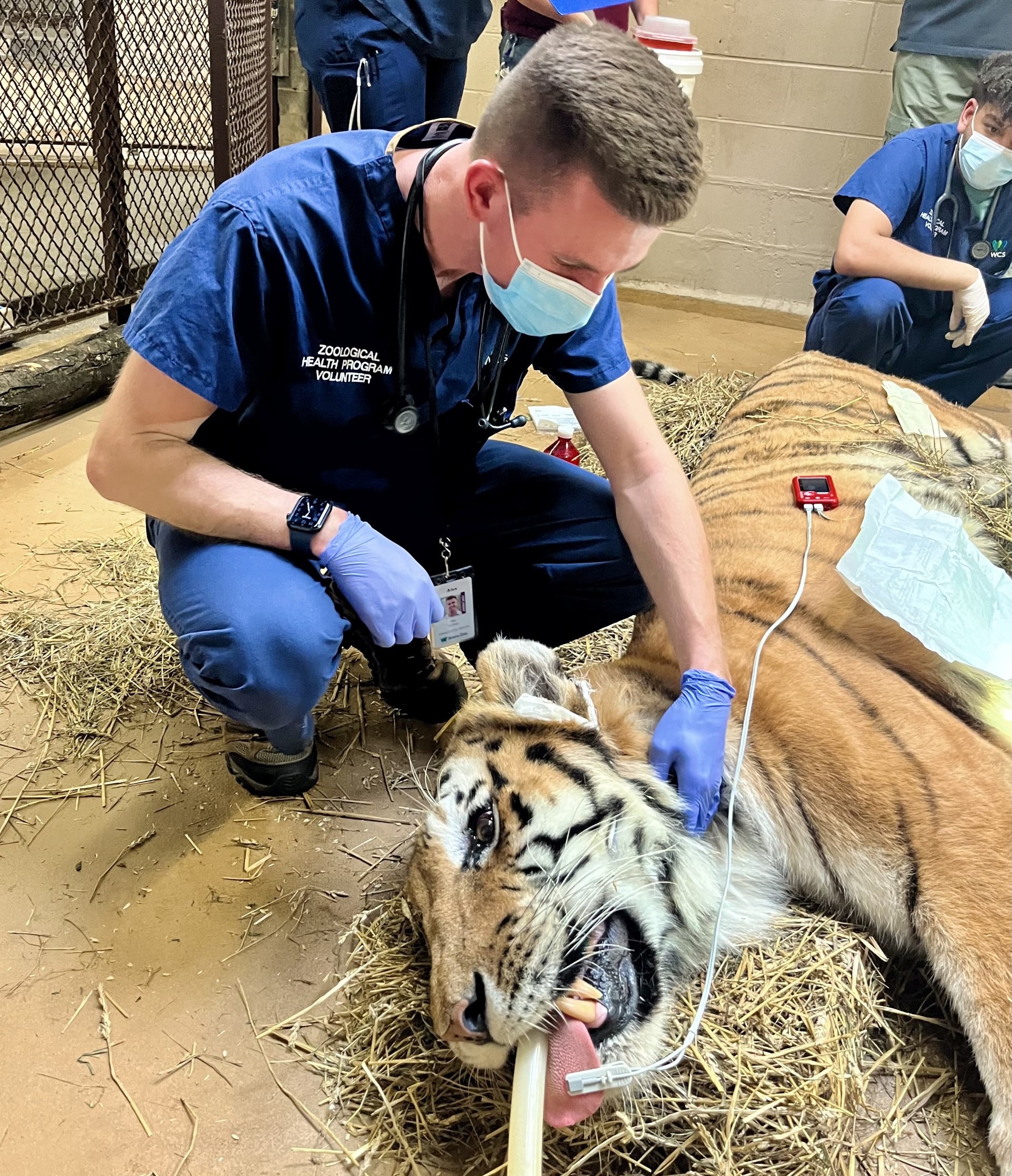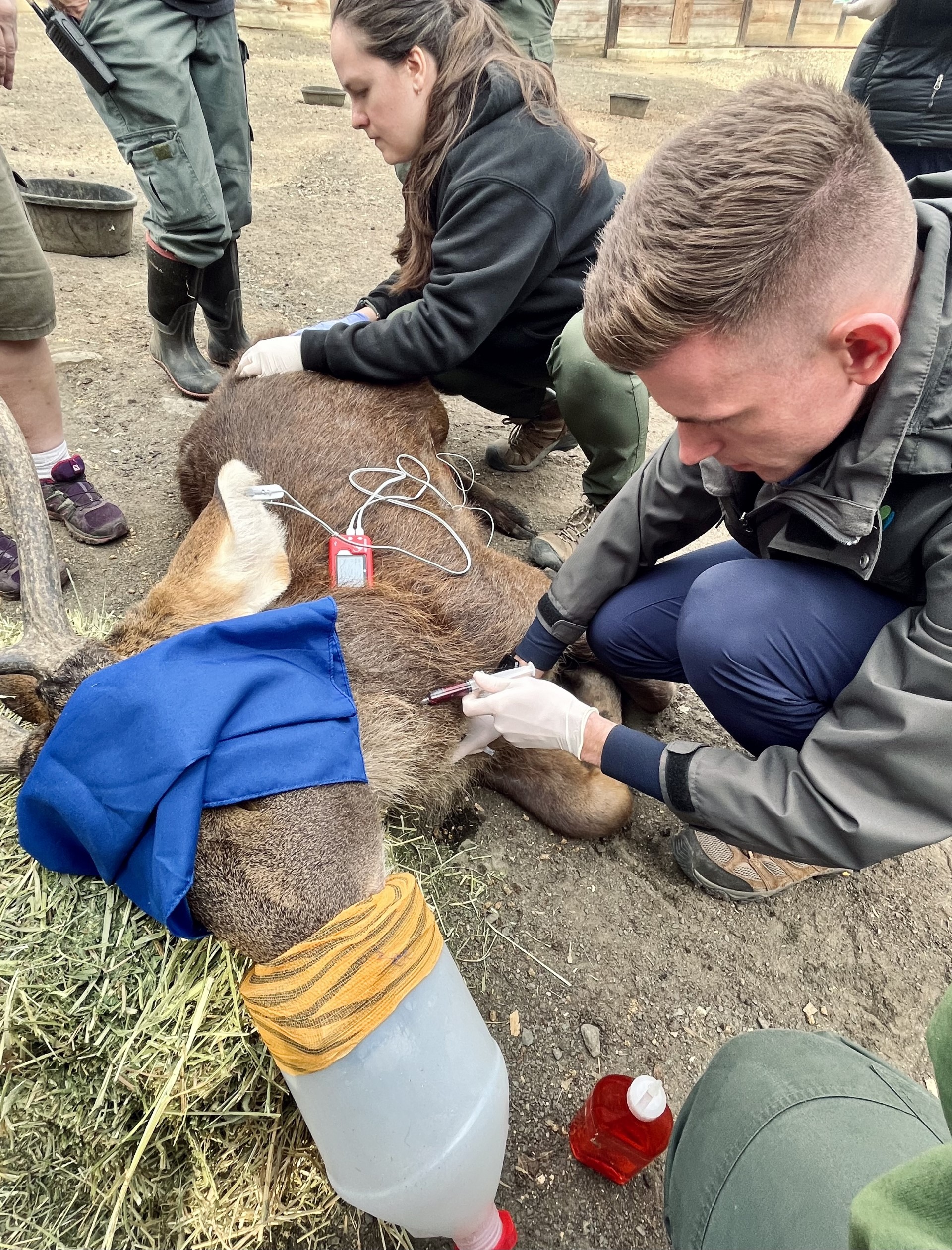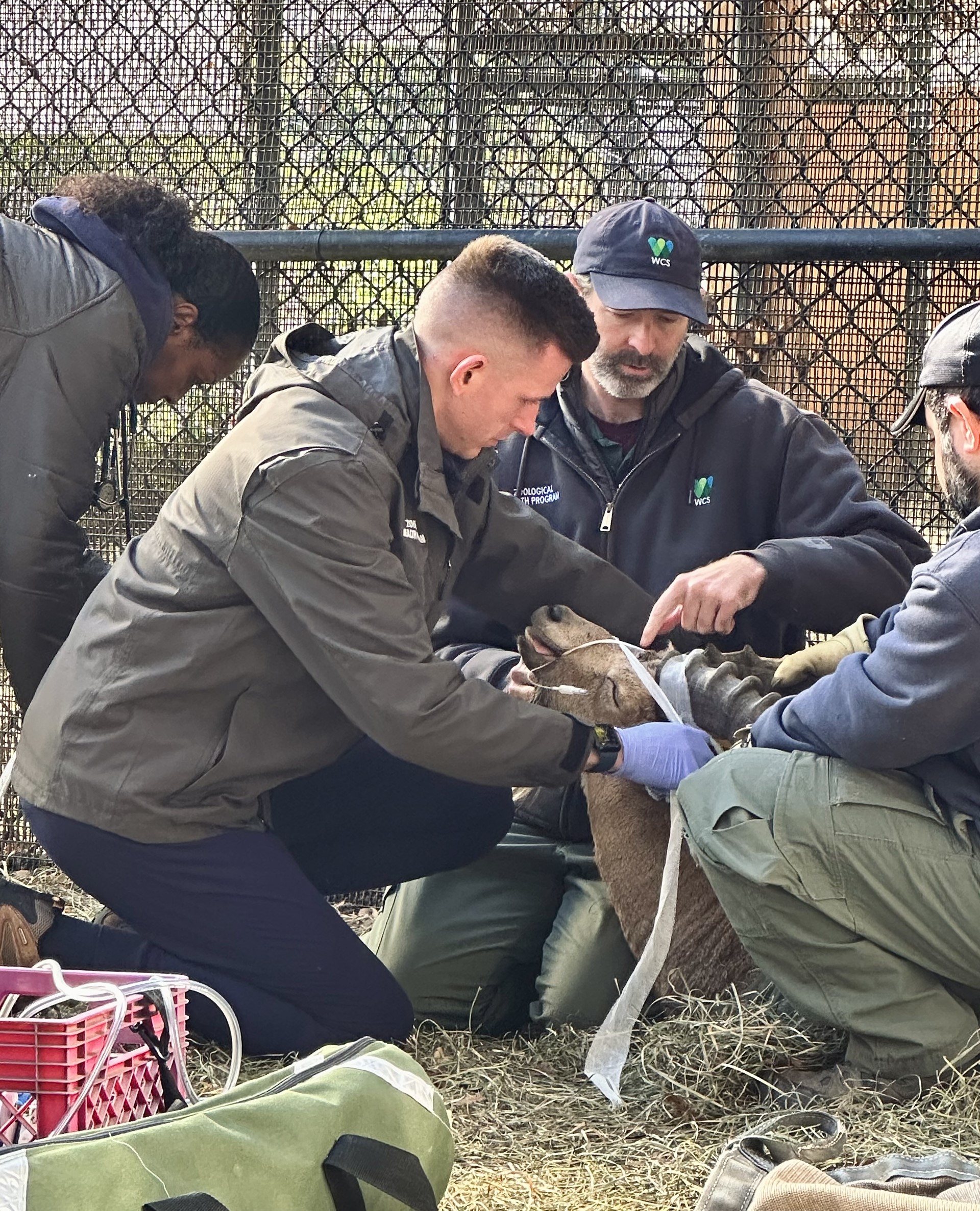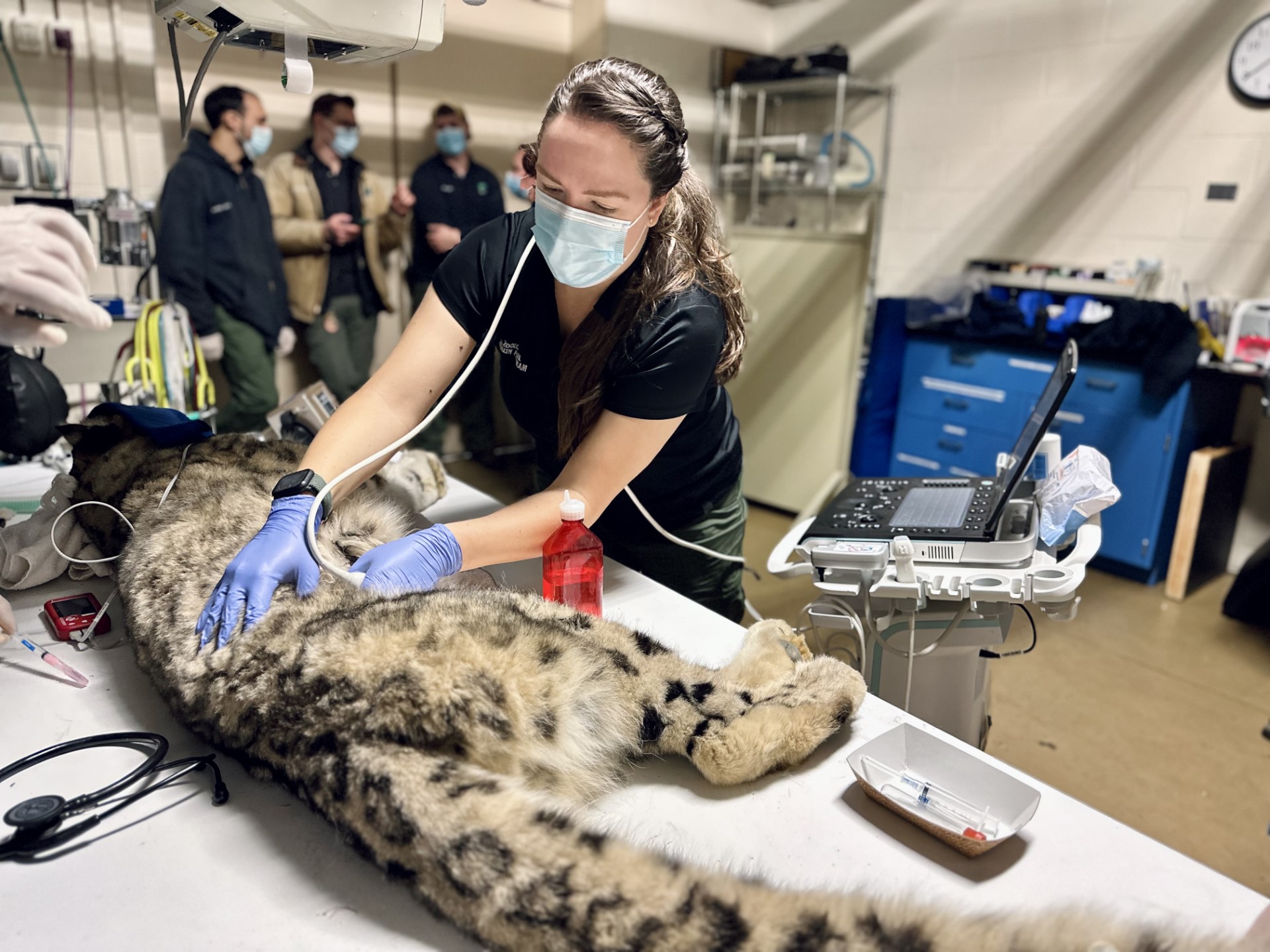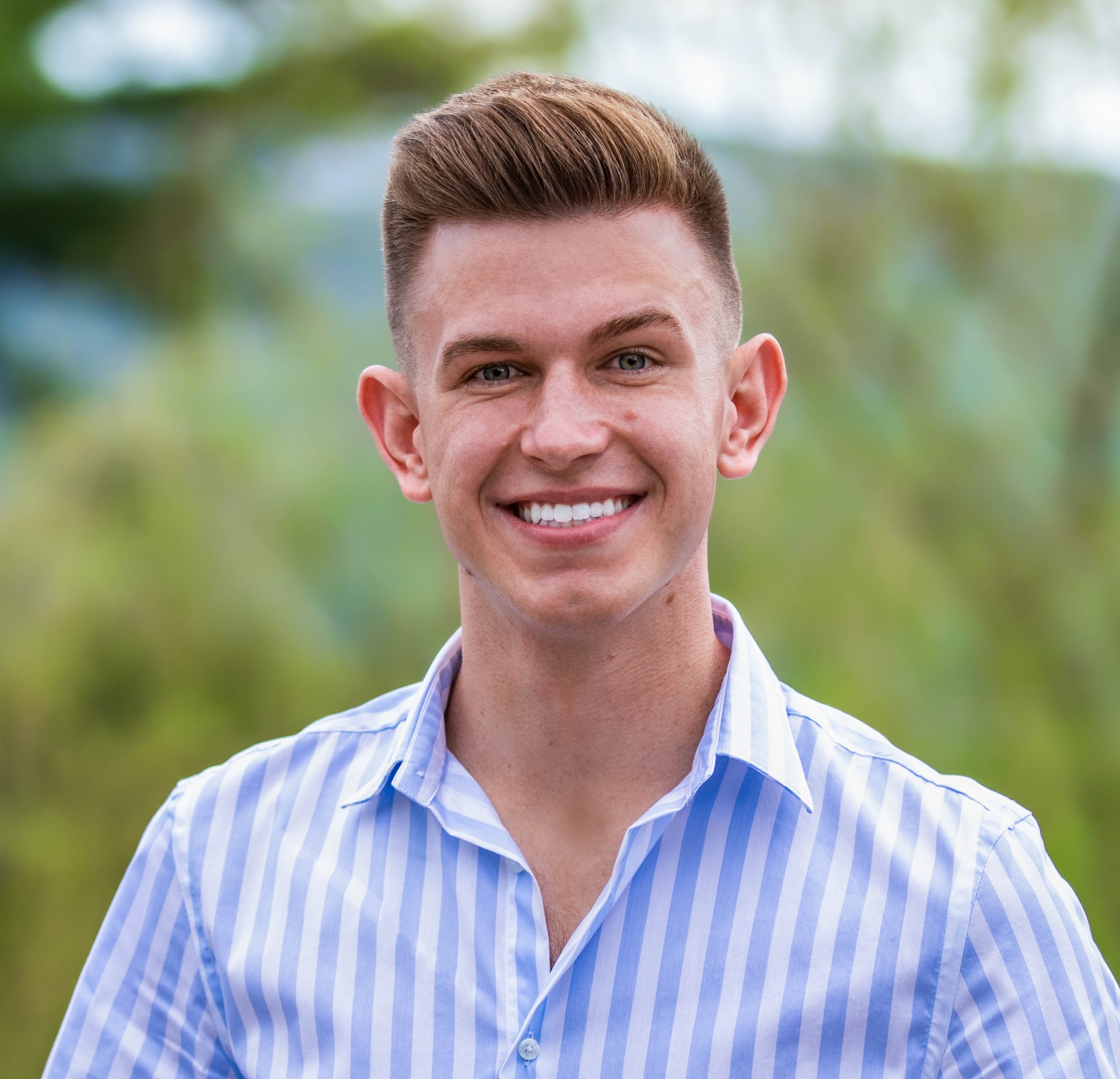“The Zoo” Through the Eyes of a Veterinary Student
By Alexander Levitskiy CALS ’20, DVM ‘24
Chasing My Dreams
Many have watched episodes of the Animal Planet docuseries “The Zoo,” getting a behind-the-scenes glimpse into the phenomenal conservation, science, and education agenda that is carried out at the Bronx Zoo. As someone interested in zoological medicine, I had always dreamt of training with the Bronx Zoo Zoological Health Program. It was not until I began my veterinary studies at Cornell University that I began to see this dream materializing; I leaned into the fact that I could spend elective rotations during my clinical year at zoological institutions. Careful planning during my didactic years of veterinary school yielded an acceptance to the Zoological Medicine and Surgery Veterinary Student Externship hosted by the Bronx Zoo—younger me would have been so proud! I was able to accept the offer courtesy of a stipend paid by the Wildlife Conservation Society (WCS), which runs the Bronx Zoo, as part of the externship program and additional critical financial support from the Cornell K. Lisa Yang Center for Wildlife Health’s Student Support Fund.
Before I knew it, October 2023 rolled around, and it was time to leave Ithaca for the Bronx. Walking through the zoo gates each (sometimes frigid) morning filled me with a sense of excitement. The chattering quaker parrots and statue-like brown pelicans along my walk to the veterinary hospital became my distant friends, reminding me to approach each day armed with knowledge I had acquired in veterinary school and the enthusiasm for the field that I have been cultivating since my younger years. I would be spending six weeks with the clinical veterinary team as they tended to the medical needs of animals at WCS (Bronx, Central Park, Queens, and Prospect Park Zoos and the New York Aquarium) in New York City. WCS cares for over 17,000 animals representing over 700 species—learning opportunities seemed endless!
A Typical Day—From Babirusas to Amur Tigers
Each day began with rounds, where all the veterinarians and hospital staff provided updates on hospitalized patients, animals in quarantine, plans for the day, and gross necropsy findings from the day prior. There was never a dull moment, as there was always something happening across the expansive collection. The clinical veterinarians and residents each rotated through different divisions of the Bronx Zoo, where they worked closely with animal supervisors and keepers to develop management plans for the animals in question. It was inspiring to witness this team effort unfold; the keepers are most attuned to the animals under their care, and the veterinarians are there to provide medical options if intervention is warranted.
Unlike other realms of veterinary medicine, zoological medicine entails more logistical planning, as many species are potentially dangerous to work with and ensuring human and animal safety is imperative. I was able to join a veterinarian each day as they saw cases and carried out planned immobilizations. I was at the forefront of high-volume zoological medicine, gaining invaluable perspective on what a career in this field entails. For each immobilization, we had a set drill. The veterinary technicians and students would load up the van with crates of medical supplies, drugs, oxygen, anesthetic equipment, and more while the veterinarian prepared their anesthetic protocol and darts. Essentially, we had a mobile hospital ready to tend to any animal anywhere in the zoo. Rain or shine, pleasant or frigid weather, the veterinary team was always ready to spring into action.
I enjoyed the adrenaline rush of packing up the van, transporting immobilized animals to the hospital, and seeing everyone from the team play their crucial role. There was one day in my first week when we had a call late in the day regarding a seizing babirusa. As we were transporting this large, immobilized animal back to the hospital, communication between the veterinarian at the wheel and the veterinary technician monitoring the animal and adjusting the inhalant anesthetic was crucial when the babirusa suddenly moved its front leg. After working up the case successfully in the hospital and returning the babirusa back to its habitat, I was able to reflect on how essential it is to apply small animal medicine principles I had learned to non-traditional species in zoos. That said, no veterinary school lecture can entirely prepare one for the dynamic and fast-paced nature of a zoo veterinarian’s day.
Zoo veterinarians are problem solvers; it was reassuring to realize that there were cases that generated thorough discussions amongst the clinical team regarding how to best treat certain ailments. Just as I learned of new species that I had only seen online or had never heard of in my life, the veterinarians also were regularly learning and checking the latest scientific literature. With each procedure, I had the chance to learn about that particular species, appreciate its anesthetic nuances (e.g., breath-holding in Nubian ibex), and develop clinical skills (e.g., venipuncture of various cervid species). Additionally, by virtue of spending six weeks at the Bronx Zoo, I was able to witness animals responding well to their treatments.
Reflecting on the Experience
My expectations established by “The Zoo” were far exceeded over the course of the externship, as I had the privilege of working with 68 species during my time at the Bronx Zoo and the New York Aquarium. It is a special opportunity to interact with species whose existence in the wild is uncertain. Zoo veterinarians get to advance our understanding of the medical ailments these species face as part of the effort to manage various taxa in captivity as assurance populations for their wild counterparts. Yet, each answered biomedical question naturally leads to another. This externship illuminated how curiosity and passion are core values of zoo veterinarians.
I sincerely thank the Zoological Health Program’s veterinary clinicians and pathologists, veterinary technicians, hospital staff, and all the animal keepers and supervisors around the zoo who welcomed me and took the time to teach and inspire me. It is clear why the Bronx Zoo has a great track record of training talented zoo veterinarians, and I leave this experience with clarity about how I want to tailor my personal veterinary journey into zoological medicine.
Alexander Levitskiy is a Cornell University College of Veterinary Medicine DVM Class of 2024 graduate from Cortland, New York. He received his undergraduate degree in Animal Science and Biological Sciences from Cornell University in 2020. He is planning on pursuing veterinary specialty training post-graduation, and has clinical interests in zoological medicine, radiology, and anesthesiology that he hopes to apply towards his long-standing passion for avian conservation.
Please consider giving to the Cornell Yang Center for Wildlife Health Student Support Fund to help provide more hands-on experiential learning opportunities for students passionate about wildlife health and conservation.

